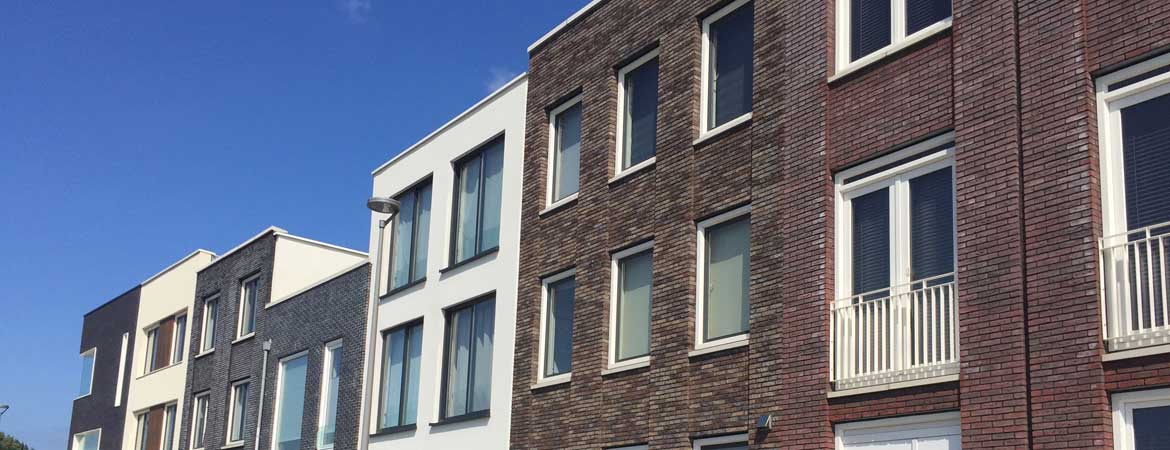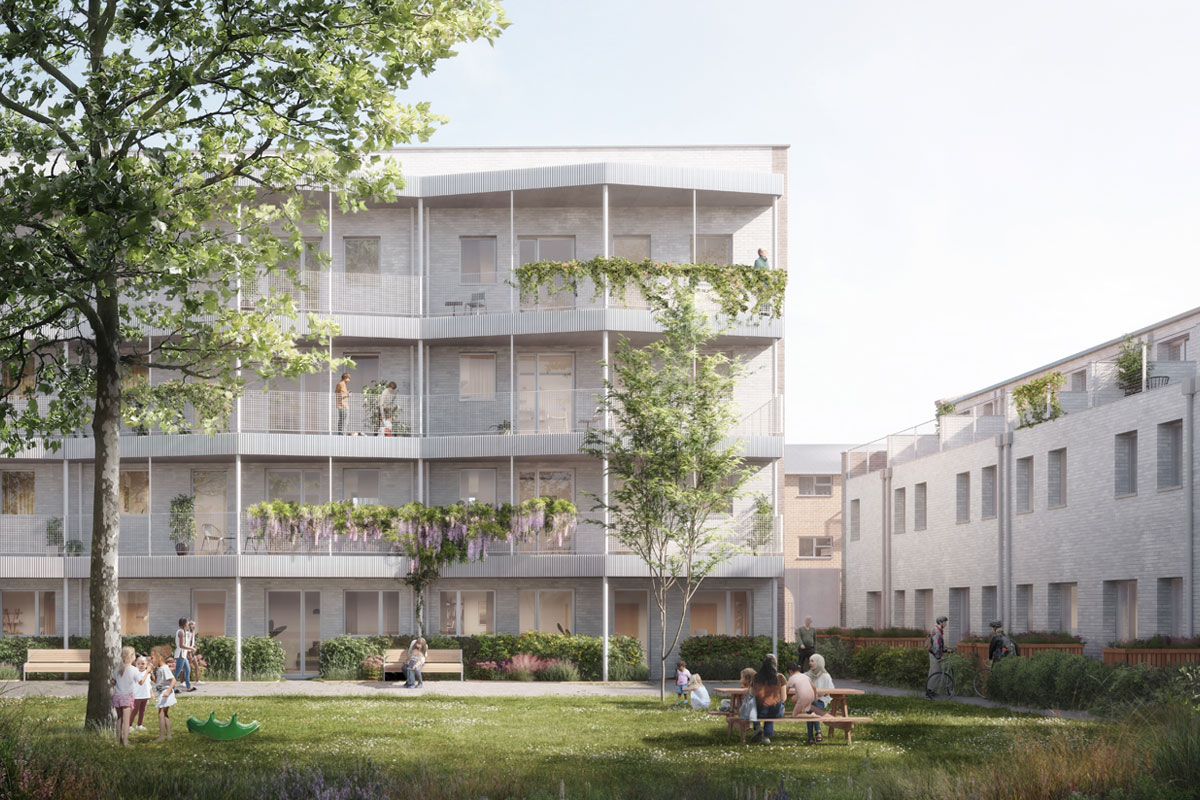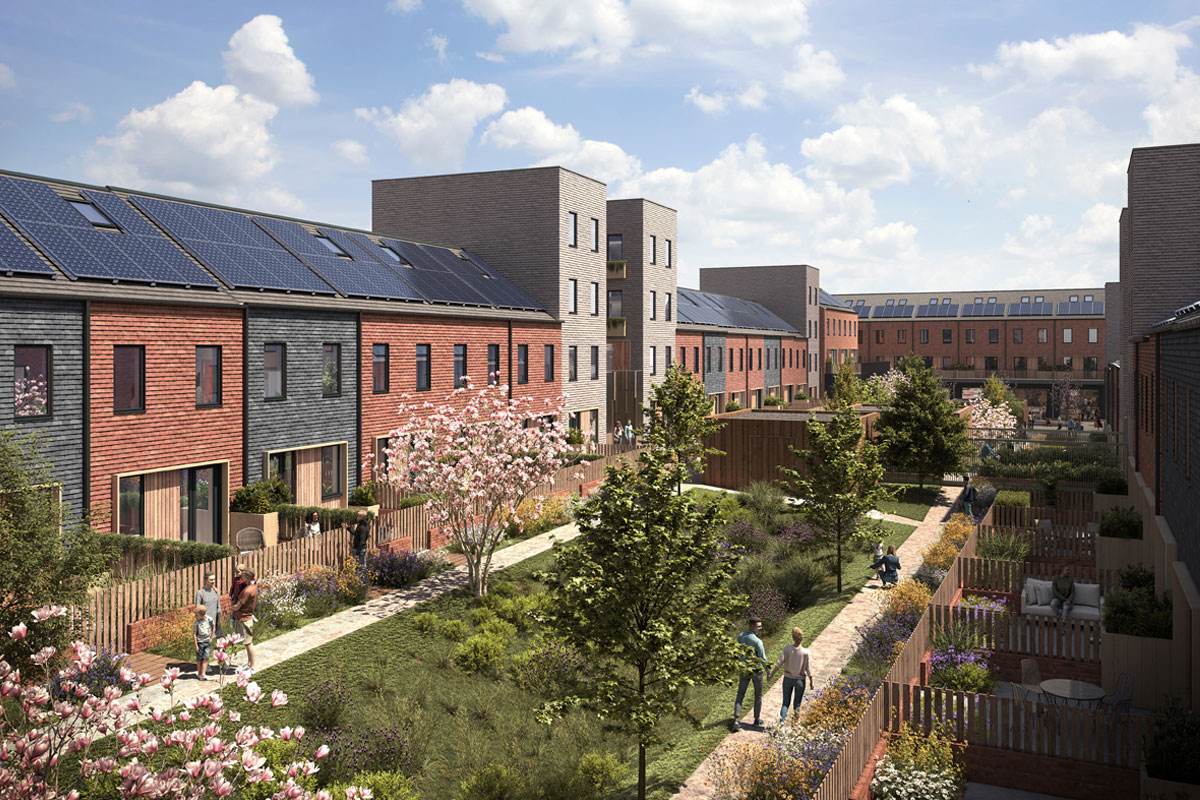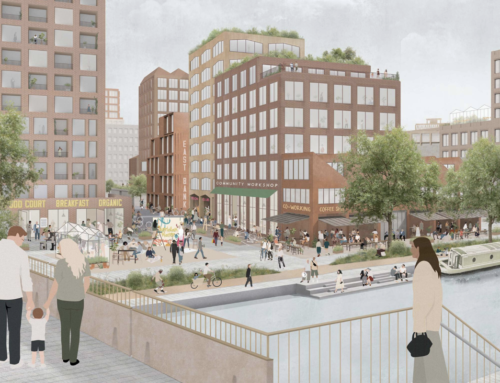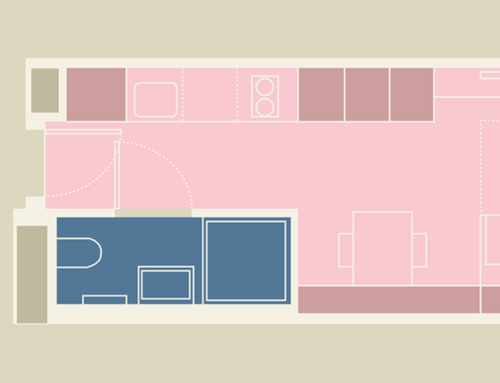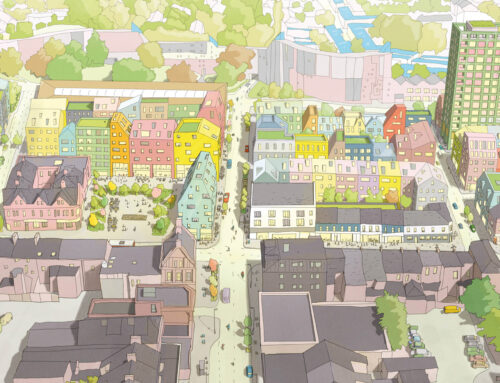21st September 2016
A FLYING VISIT TO ALMERE’S HOMERUSKWARTIER.
21st September 2016
A FLYING VISIT TO ALMERE’S HOMERUSKWARTIER.
Share
On the way back to the ferry from a camping holiday near Eindhoven this summer, Neil paid a flying visit to the Homesruskwartier custom and self-build area of Almere Poort, widely regarded as the largest and among the most innovative mass custom-build housing projects in the world.
Lots has been written (such as this and this) about the vaulting ambition and impressive delivery of a complex project; I can’t really add to these on the basis of such a brief exposure, so here are a few impressions from the perspective of someone keen to see the best bits of this approach widely replicated in the UK.
First, there’s a general sensibility to domestic architecture and an attention to detail in the planning of space in the Netherlands that tends to imbue even the most ordinary of new-build development with a basic level of urban quality. Of course there is rubbish, and some of it in the name of ‘innovation’, but the Dutch love a terrace and a proper corner and they generally don’t need to be reminded to include excellent cycle infrastructure and lots of street trees in new projects. So, even in the ‘shatter zone’ parts of industrial towns like Eindhoven and Tilburg, recently-built housing – and especially its public realm – typically comes across a lot better than you’d find comparably in the UK.
This might help explain why, despite the rules for building at Almere being set out on one A4 page per plot, there’s a unity and coherence to a lot of the completed streets in Homeruskwartier which mean it blends in to a surprising extent with the similarly street-based developer housing in neighbouring parts of Almere Poort. It might also partly be because there are only so many ways you can sensibly plan and elevate a terraced house, so the sense of diversity comes from small differences in window-to-wall ratios and arrangements that are a factor of modest differences in how each custom-build household wants its rooms laid out and expects to use them.
It’d easy to get distracted by the more avant-garde statements and to deduce from them that custom-build is defined by (and condemned to remain) a niche who want their home to express their personality. But that would miss the point – the overwhelming impression is that this approach gives a lot of people who just don’t like what spec house-builders offer subtly but decisively greater control over their living environment.
Second, a surprisingly large amount of Homeruskwartier is not nifty terraces producing complex, interesting streetscapes but standalone houses often on large plots, many of which look like off-the-peg kit houses. The juxtaposition between different products (and price points) is occasionally awkward, but it’s a sign of success that the project has evidently helped attract people of wide range of incomes and family types to what a couple of decades ago was a windy bit of reclaimed land – with the emphasis of much of the development on making custom-designed homes affordable.
Third, the work-in-progress parts of Homeruskwartier really are… striking. It hits home quite how pioneering it must feel to sign on the line for one of the earliest plots in a new block, knowing that you could be living amongst a building site for some time, with ‘gaps in the teeth’ of your street gradually being filled in with you know not what. For emerging UK custom build enablers (not to say planning authorities), this ‘pure’ aspect of the Dutch custom build experience may a commercial bridge too far – with projects such as Heartlands and Graven Hill – and indeed TOWN’s custom build model as deployed at own K1 Cohousing in Cambridge – taking steps to ensure fuller coordination of the delivery of projects so that buyers have some certainty over when and how their immediate environment will be ‘finished’. This might change with experience, confidence and time: what Almere shows beyond dispute is the extent to which UK custom build is at the baby steps stage compared with our Dutch counterparts.
Neil Murphy
